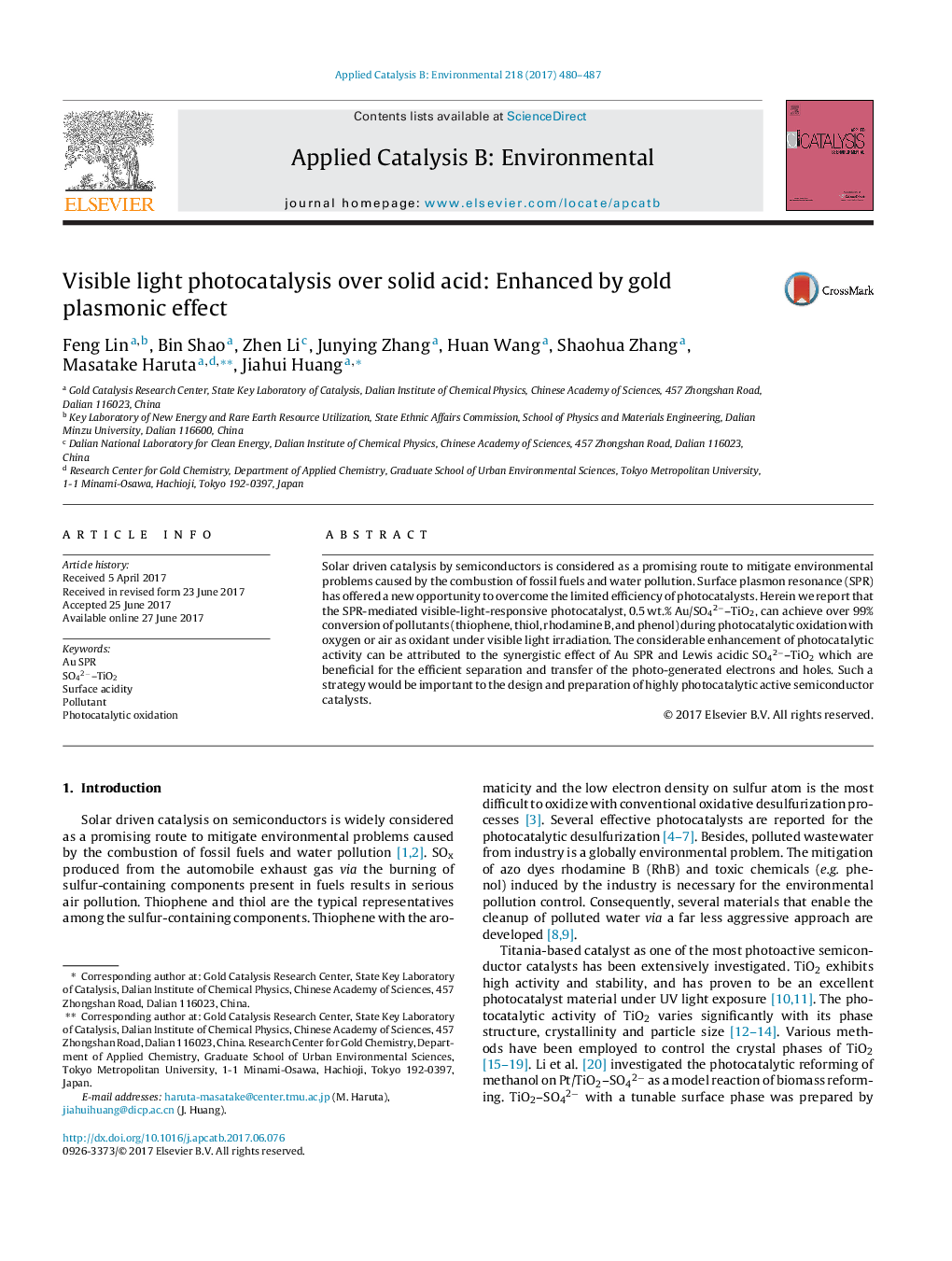| کد مقاله | کد نشریه | سال انتشار | مقاله انگلیسی | نسخه تمام متن |
|---|---|---|---|---|
| 6453781 | 1418802 | 2017 | 8 صفحه PDF | دانلود رایگان |
- The crystallinity and charge separation of TiO2 are significantly improved by sulfation process and Au SPR.
- Highly efficient photocatalytic oxidation of pollutants was achieved on SPR-mediated photocatalyst Au/SO42â-TiO2.
- The synergistic interaction between Au SPR and Lewis acidic sites are crucial to achieve the excellent catalytic activity.
Solar driven catalysis by semiconductors is considered as a promising route to mitigate environmental problems caused by the combustion of fossil fuels and water pollution. Surface plasmon resonance (SPR) has offered a new opportunity to overcome the limited efficiency of photocatalysts. Herein we report that the SPR-mediated visible-light-responsive photocatalyst, 0.5Â wt.% Au/SO42â-TiO2, can achieve over 99% conversion of pollutants (thiophene, thiol, rhodamine B, and phenol) during photocatalytic oxidation with oxygen or air as oxidant under visible light irradiation. The considerable enhancement of photocatalytic activity can be attributed to the synergistic effect of Au SPR and Lewis acidic SO42â-TiO2 which are beneficial for the efficient separation and transfer of the photo-generated electrons and holes. Such a strategy would be important to the design and preparation of highly photocatalytic active semiconductor catalysts.
146
Journal: Applied Catalysis B: Environmental - Volume 218, 5 December 2017, Pages 480-487
